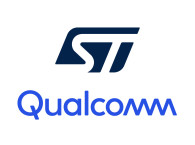
The 802.15.4 wireless connectivity market is set to continue its transition towards IP-enabled solutions, increasing from 6% of the market in 2015 to more than 30% by 2019, says market researcher ABI Research. Alongside this, the market share of combo ICs from the total shipments of 802.15.4 chips is set to grow from 1% to more than 12%.
Emerging IP-enabled networking technologies such as Thread are expected to take a significant proportion of the 802.15.4 market, most notably in the smart home, while the recent collaboration to enable the ZigBee Cluster Library to run over Thread networks will bring about a more rapid development process and provide a boost to 802.15.4 chipset shipments as a whole.
With significant market opportunities for both ZigBee and Thread, there is a growing incentive for suppliers to provide a futureproof multi-protocol solution able to support the varied IoT device types down the line. “It is becoming increasingly clear that the market for the connected home and other low-power wireless networking environments will continue to adopt multiple connectivity solutions based on different needs and priorities. Although there is a clear trend towards IPv6 solutions, not every end device will need to support IP, and there will be room for both IP and non-IP solutions across the various IoT markets,” comments Malik Saadi, VP, Strategic Technology.
While it will take some time for 802.15.4 chipsets paired with Wi-Fi or Bluetooth to gain traction, in the short term there will be significant opportunities for “soft” combos that integrate multiple 802.15.4 protocols on the same chip and use the same radio layer. Notable products with this technology include GreenPeak’s GP712, a multi-protocol chipset supporting both ZigBee and Thread packets.
In order to drive demand, reduce costs, and improve time to market, suppliers need to have a connectivity portfolio large enough to enable customers to support numerous protocols. “In the past, the majority of key Wi-Fi and Bluetooth IC suppliers have not provided an 802.15.4 solution, while 802.15.4 suppliers have not been aggressively pursuing Wi-Fi or Bluetooth,” Saadi adds.
Vendors with diversified connectivity portfolios encompassing Wi-Fi, Bluetooth, 802.15.4, and other low-power wireless solutions, such as TI, Silicon Labs, STM, Freescale, Nordic, Marvell, and Microchip, will be able to take advantage of these opportunities. These combo solutions will become vital in providing the scalability and flexibility needed to drive the smart home and other IoT vertical markets in the near future.
These findings are part of ABI Research’s ZigBee and IoE Semiconductors Market Research.
www.abiresearch.com





